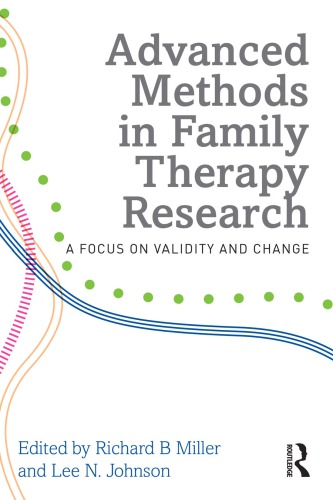موضوعات
آموزش و پرورش
ادبیات و زبان
پزشکی، دندانپزشکی و داروسازی
تاریخ و جغرافیا
داستان و رمان
دیگر
دین و فلسفه
روانشناسی
ریاضیات و آمار
سلامتی، تناسب اندام و رژیم غذایی
شیمی و پلیمر
علوم اجتماعی و حقوق
علوم زیستی و بیوتکنولوژی
فیزیک و نجوم
کامپیوتر و اینترنت
کتابهای کودکان و داستان
کسب و کار و اقتصاد
کشاورزی و دامپزشکی و غذا
معماری
مهندسی و فناوری
هنر و تئاتر
محصولات
Advanced Methods in Family Therapy Research: a focus on validity and change - Original PDF
نویسندگان: خلاصه: I (L.J.) remember when I started graduate school as a new student in the field of marriage and family therapy (MFT). One of the required classes in my first semester was statistics. I was an engineering major and I enjoy math so I thought statistics would be fun. The teacher was great, and I learned a lot. The one downside to the experience was that the course was taught in the agriculture department. The class focused mostly on analysis of variance (ANOVA), and the instructor would draw a 2 × 2 or larger plot on the chalk- board and say something like, “You can randomly assign conditions to each square in your field, and then you plant your seeds in the randomly assigned quadrant, and you can ‘see’ what happens and calculate an ANOVA.” After a few class periods of plot drawing and hearing examples from agriculture, I felt like I was starting to learn what an ANOVA was and how to calculate it. But I was missing the application to people. So, being the good graduate student that I was, I raised my hand and asked, “How do you do this with people?” The instructor replied, “You don’t.” I was dumbfounded. Why was I taking this class if I could not apply what I was learning to people? Why was I taking this class from someone who was a fine teacher but did not know how to apply this information to people? As I progressed through graduate school and took other statistics and research methods courses, I was able to fill in the gaps and learn how to apply statistics to people. I also learned how much more compli- cated research was when trying to apply what I had learned about researching individual people to researching more complex configurations that included couples and families.آیا کتاب مورد نظر هنوز بر روی سایت قرار نگرفته است؟ جای نگرانی نیست! کافی است بر روی گزینه سفارش کتاب کلیک کرده و درخواست خود را ثبت کنید. در کمتر از چند ساعت کتاب شما را آماده خواهیم کرد.
